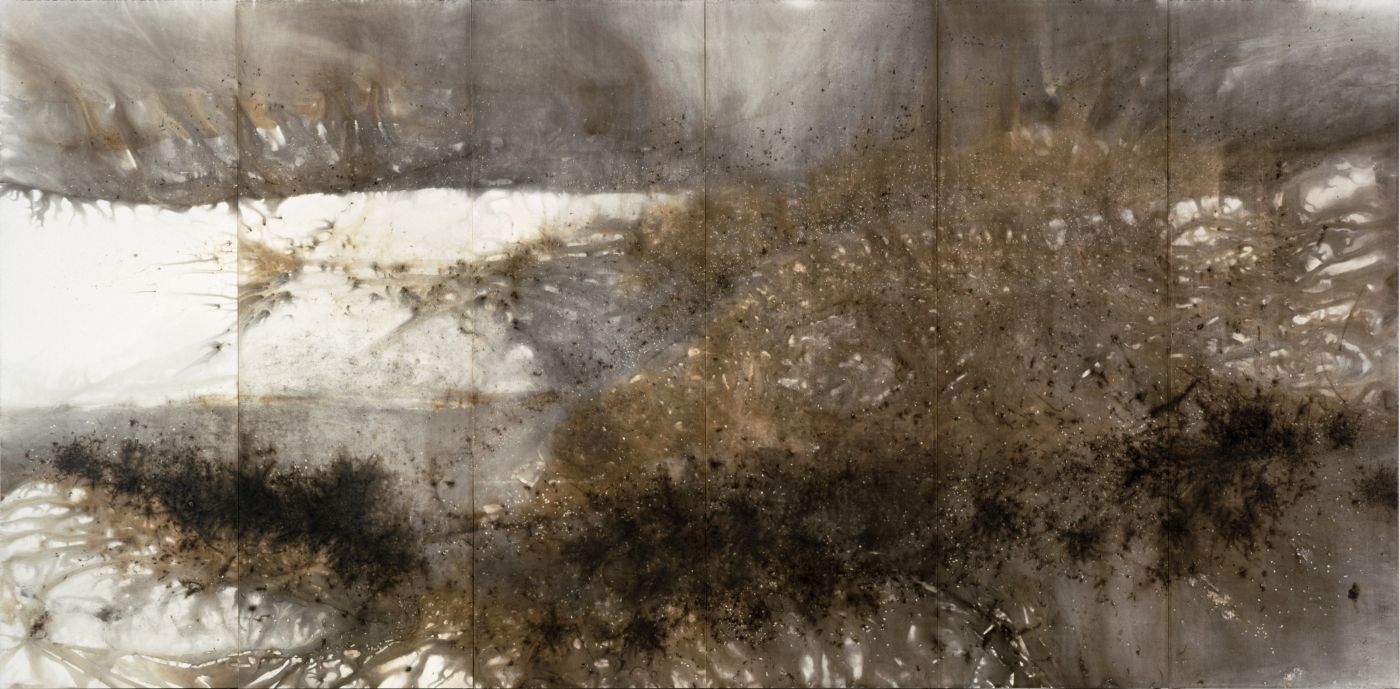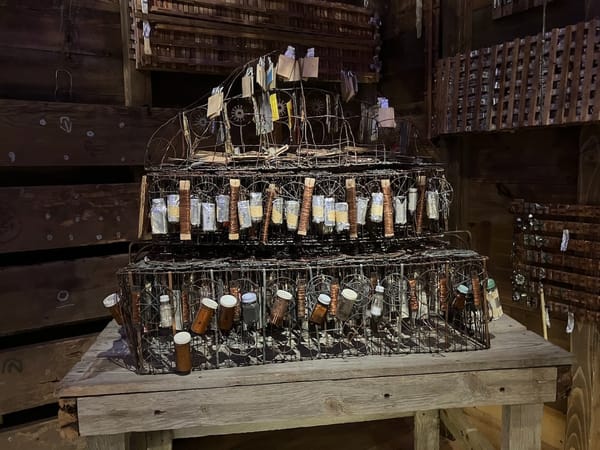Road Trip CHICAGO: THE ALLURE OF MATTER
by Carol Emmons
This exhibition occupies two museums in Chicago: the Smart Museum at the University of Chicago and Wrightwood 659, a new space near Lincoln Park. It surveys recent art from China, with the curators proposing that these works represent a new trend in Chinese art with an emphasis on materiality—the physical substance of which the art is formed.

What is the role of matter in a work of art? That we call it the medium reminds us that it is a means to an end—the creation of form and content—and also a go-between (like the medium in a séance). In the very physical works of The Allure of Matter, the medium also serves as a link between art and life.
Art that engages materiality tends not to disguise its means. That is, media are presented straightforwardly, in contrast to, say, academic painting. The latter promotes a representation of the world with an uninflected—ideally mirror—surface which is not about paint but about illusion. Van Gogh’s works were anti-academic in that they were both abstracted images (e.g., a simplified suggestion of a night sky) and material (highlighting the obvious texture of the paint).
Most of the works in The Allure of Matter are installations or large sculpture, but even the two-dimensional pieces function more like objects. For example, Zhang Huan’s Ash Painting No. 5 (2006), a rectangular field of incense ash gathered from temples around Shanghai, and Ma Qiusha’s Wonderland: Black Square (2016), comprised of a panel of black nylon stockings stretched over concrete shards, both imply considerable mass and physicality.
Many of the pieces in the exhibition can be seen as essays on a certain material—paper, hair, silk, porcelain, water—and the large scale of the works combined with their installational nature immerses viewers in the chosen medium. This experience is enhanced by uncrowded layouts at both sites: there is plenty of room to reflect and absorb. The pieces are also augmented by videos of process (for example, Cai Guo-Qiang’s gunpowder works and Liang Shaoji’s use of silkworms in armatures), accentuating the manipulation of materials.
Media like paper, silk, and porcelain have a long tradition in Chinese art; others have cultural associations, such as the scholar’s rocks recreated in out-sized stainless steel versions by Zhan Wang. Some media are purely formal; others have broader associations across cultures (hair, ash, fat). Yet others are more overtly political: Huang Yong Ping’s project of laundering books in washing machines, rendering them into masses of pulp, speaks both to undermining authority and to censorship. Similarly, He Xiangyu’s Cola Project (2008-12) entailed laboriously boiling down 60,000 bottles of Coca- Cola into black ash, referencing a foreign consumerist presence.
Emphasizing materiality is not novel; for example, both Euro- American Process Art and Arte Povera of the 1960s and ‘70s foregrounded material. This was also a time that artists, especially women, looked seriously at non-Western artistic traditions that employed different media. And while some Chinese artists are familiar with the Euro-American approaches, their works are not mere derivations of these precedents—they are imbued with distinct cultural significance, and the integrity of their materials stands on its own, partly because media do not constitute a style but rather substance.
Focus on materials is distinct from appropriating found objects as in collage: materiality is about an insistent, elementary presence. So while an impressive and thought-provoking work, Xu Bing’s 40-foot “tiger skin” floor piece 1st Class (2011)—comprised of 500,000 “1st Class” brand cigarettes with filters creating the tiger’s orange stripes— functions more as assemblage. At the same time, many of these works subvert expectations of a medium: huge sheets of porcelain, literally paper-thin, by Liu Jianhua defy the fragility of the material. Many of these works are also very labor-intensive, reiterating the inherent qualities of the materials.
Other pieces are more object oriented, but by replacing the usual material, create a new sense. For example, Wang Jin fabricates elaborate traditional costumes in translucent polyvinyl chloride and vinyl filament, situating them in the contemporary era.
What is the appeal of materiality? Sometimes it is born of necessity (as an inexpensive means to create), sometimes by choice. It can be poignant, as in Song Dong’s Traceless Stele (2016), on which viewers scribe with water that evaporates quickly due to heating elements in the plinth. Or materiality can challenge, like Sun Yuan and Peng Yu’s Civilization Pillar (2001/2019), a thirteen-foot high cylinder of human fat (from liposuction clinics) and wax.
The notion of materiality is trendy these days, perhaps in response to an increasingly mediated, digital culture. If one were cynical, historians’ current interest might be seen as merely a long overdue acknowledgment of the physicality of making by people who don’t work with their hands. In “Art After Philosophy” [note 12], Joseph Kosuth cautions, “One should never forget...that a historian loves history more than anything, even art.” Regardless, the power of the works in The Allure of Matter bear out the title, compelling interest and engagement with rich rewards of allusion and meaning.
The Allure of Matter: Material Art from China The Smart Museum of Art (University of Chicago) through May 3, 2020
and Wrightwood 659 through May 2, 2020
Carol Emmons is an installation artist and Professor Emerita of Art at the University of Wisconsin-Green Bay.




